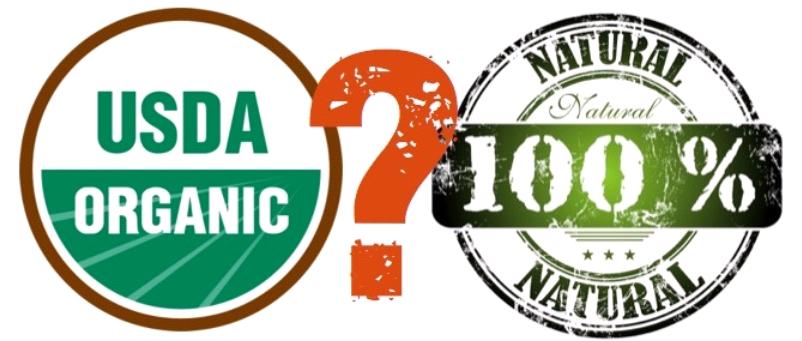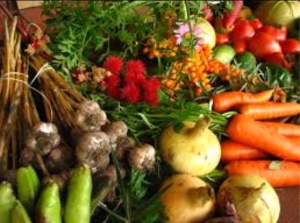 Preparing food nowadays is so much more complicated than ever before. If you want to eat healthy, it is advisable to check labels closely to fully understand the components of what you will be ingesting. If you simply run into the grocery store and toss a few items in your cart without a care in the world, instead of perusing the product carefully, the old adage of “what you see is what you get” may just apply to you.
Preparing food nowadays is so much more complicated than ever before. If you want to eat healthy, it is advisable to check labels closely to fully understand the components of what you will be ingesting. If you simply run into the grocery store and toss a few items in your cart without a care in the world, instead of perusing the product carefully, the old adage of “what you see is what you get” may just apply to you.
In recent years, the words “organic” and “natural” have become more prevalent in our vocabulary. You might have seen the ads or articles that promote eating healthy and that you should opt for better choices by choosing “organic” or “natural” foods. But what does this mean exactly?
Eating healthy is not just a craze
While we used to look at those who consumed a vegan diet, or loved sprouts on their sandwich, as “health food nuts”, ever so slowly, we, the American consumer, learned that eating healthy, or at least healthier than we did in the past, is not just a passing phase. Before you jump on that bandwagon of healthier eating, do you really know the difference between the various types of healthy food choices?
Distinguishing between “organic” and “natural”
First, one of the top health tips for you to know is that, the terms “organic” and “natural” are not interchangeable terms. While both terms may imply that the food is more wholesome and healthy, in reality there are vast differences which range from the regulations which govern the production of the product, to the nutritional components of the finished product.
Organic foods must abide by strict regulations. They are encompassed under the National Organic Program, which in turn is part of the United States Department of Agriculture. This faction of government holds the food industry to strict standards as to the production, as well as the sale, of foods labeled as organic.
 Natural foods, according to the Food Marketing Institute, are those foods or products that are minimally processed and found to be free of artificial sweeteners, colors, flavors and additives like hydrogenated oils, stabilizers and emulsifiers. But, unlike the inspection and certification process that is necessary for organic foods, there is no such rigorous adherence to rules and regulations. If a product’s label identifies it as “natural”, this does not relate to the growing methods, and/or the use of preservatives, whereas organically grown foods are bound by a much stricter set of rules and regulations governing them.
Natural foods, according to the Food Marketing Institute, are those foods or products that are minimally processed and found to be free of artificial sweeteners, colors, flavors and additives like hydrogenated oils, stabilizers and emulsifiers. But, unlike the inspection and certification process that is necessary for organic foods, there is no such rigorous adherence to rules and regulations. If a product’s label identifies it as “natural”, this does not relate to the growing methods, and/or the use of preservatives, whereas organically grown foods are bound by a much stricter set of rules and regulations governing them.
Labeling may be tricky
As to labeling food as “organic” or “natural”, now that you know how regulations affect the food, you need to decipher the label. True organic food is emblazoned with its own special label right from the U.S. Department of Agriculture (“USDA”), which is a governmental agency that oversees the American farming industry. Not only does the USDA assist farmers with price support subsidies, but it has a role in inspecting food to ensure the safety of the American public. If a food label is green and brown, or black and white, and features a circle with the words “USDA Organic” in the center, you are assured that the food within the package is at least 95 percent organic as recognized by the USDA’s standards. If you encounter products that don’t have the USDA seal, but state, “made with organic ingredients,” you know they are deemed to be at least 70 percent organic.
How organic and natural foods are grown
While “natural” merely defines the finished product, “organic” refers to not only the final product, but how that food was produced. In order for foods to be labeled “organic”, they must meet or exceed the regulations of the USDA. Some of the USDA’s criteria includes: 1) the food must be grown and processed using organic farming methods that recycle resources and support biodiversity; 2) crops must be grown without using synthetic pesticides, bioengineered genes, petroleum-based fertilizers or sewage sludge-based fertilizers; and 3) all organic livestock must be given organic feed only, have access to the outdoors and be raised free of antibiotics and growth hormones. It is a very important distinction that the term “natural” has no connection to the living conditions of animals, where organic labels do.
As more people jump on the healthful foods bandwagon, more companies have been encouraged to tout their products as “natural” to encourage sales. While sales of genuine organic foods have increased in the past two decades, many consumers eschew organic products as they are more expensive or not available in the types of products they regularly consume. Even if the price of organic foods may be prohibitive to some consumers, latching onto the natural foods craze is not all bad either. While organic food is not more nutritious than natural foods, you are at least being proactive in feeding your family natural foods, since you are consuming less artificial substances, and, it is a step toward healthier eating.


